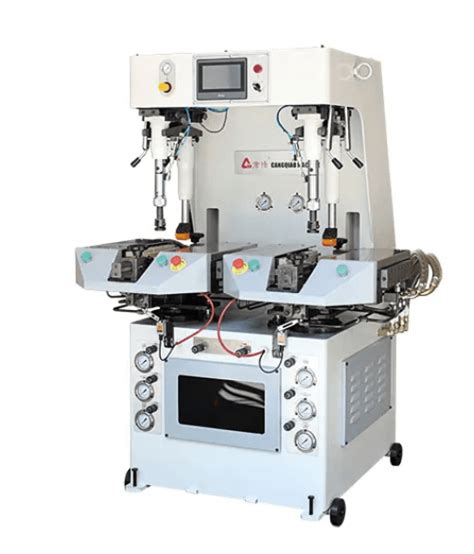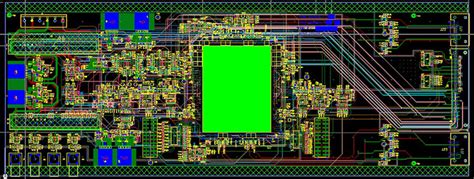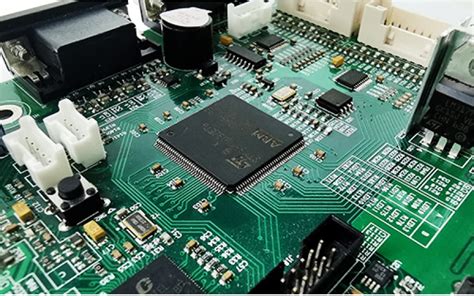Mastering IPC Compliance in PCB Assembly Manufacturing
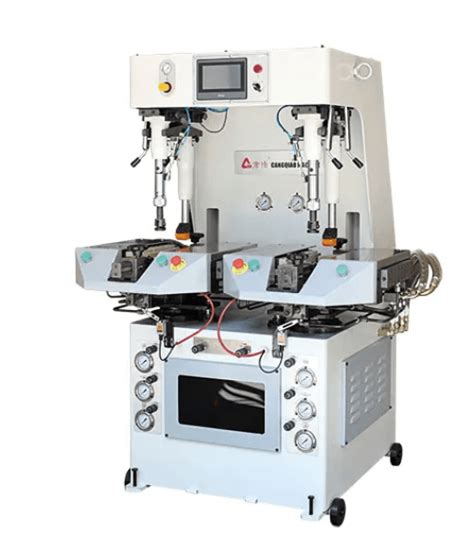
Key Takeaways
Adhering to IPC standards in PCB assembly ensures consistency, reliability, and compliance across electronics manufacturing. These guidelines define critical parameters for material selection, component placement, and soldering quality, directly impacting the performance of PCBA (Printed Circuit Board Assembly). Key benefits include reduced defect rates, enhanced product longevity, and alignment with global industry benchmarks.
| IPC Standard | Focus Area | Impact on PCBA |
|---|---|---|
| IPC-A-610 | Acceptability of Electronic Assemblies | Defines visual criteria for solder joints and component alignment |
| IPC-J-STD-001 | Soldering Requirements | Ensures reliable electrical connections and mechanical strength |
| IPC-7351 | Land Pattern Design | Optimizes component footprints for manufacturability |
By integrating these standards, manufacturers minimize risks such as thermal stress and electrical failures while streamlining PCB assembly workflows. Compliance also simplifies audits and certifications, fostering trust with clients and regulatory bodies. This foundational alignment with IPC standards sets the stage for exploring specific protocols in subsequent sections, ensuring a cohesive approach to quality-driven electronics production.

Key IPC Standards in PCB Assembly
Modern PCB assembly processes rely on adherence to foundational IPC standards to ensure consistent quality and reliability in electronics manufacturing. Among the most critical benchmarks is IPC-A-610, which defines acceptability criteria for PCBA components, including solder joint quality, component placement accuracy, and cleanliness requirements. Equally vital is IPC-J-STD-001, the industry’s gold standard for soldering processes, which specifies material selection, thermal profiles, and inspection protocols. These standards work synergistically to minimize defects like tombstoning or cold joints while ensuring compatibility with automated PCB assembly systems.
For high-reliability applications, IPC-6012 governs performance qualifications for rigid boards, addressing parameters such as conductor spacing, hole wall integrity, and thermal stress resistance. Manufacturers integrating these standards into their PCBA workflows not only achieve compliance but also enhance process repeatability—a critical factor in scaling production. Transitioning between design and manufacturing phases, standards like IPC-2221 provide guidelines for layout optimization, reducing risks of signal interference or mechanical failures. By aligning with these frameworks, companies systematically address challenges in miniaturization, lead-free soldering, and mixed-technology PCB assembly, positioning themselves to meet evolving industry demands without compromising product longevity.
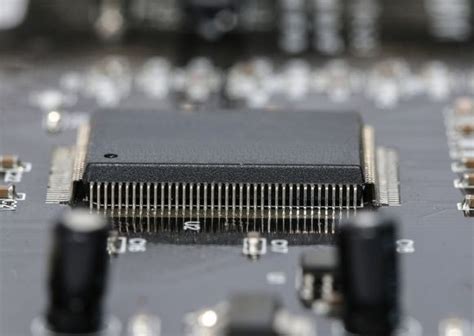
PCB Reliability via IPC Compliance
Adherence to IPC standards in PCB assembly ensures consistent product reliability by addressing critical factors like material selection, process control, and testing protocols. For instance, IPC-A-610 defines acceptance criteria for solder joint quality and component placement, directly impacting the longevity of PCBA in harsh environments. By enforcing thermal management guidelines from IPC-J-STD-001, manufacturers mitigate risks of delamination or thermal fatigue, which are common causes of field failures.
Moreover, IPC compliance mandates rigorous documentation of assembly processes, enabling traceability and continuous improvement. Standards such as IPC-6012 specify performance requirements for base materials, ensuring boards withstand mechanical stress and environmental exposure. This alignment reduces variability in PCB assembly, particularly in high-frequency or high-density designs where even minor deviations can compromise signal integrity.
Transitioning to IPC-aligned practices also minimizes defects like voiding or misregistration by standardizing solder paste application and component alignment. For example, IPC-7351 outlines land pattern geometries that optimize solder flow, directly enhancing electrical connectivity. Combined with testing frameworks like IPC-TM-650, these protocols create a闭环 (closed-loop) system for validating reliability at every production stage.
By integrating IPC standards into PCBA workflows, manufacturers not only meet industry benchmarks but also build trust through predictable, long-term performance—a critical advantage in sectors like aerospace or medical electronics where failure is not an option.
Optimizing PCB Assembly via IPC
Adherence to IPC standards provides a systematic framework for enhancing the precision and efficiency of PCB assembly processes. By aligning with guidelines such as IPC-A-610 (Acceptability of Electronic Assemblies) and IPC-J-STD-001 (Requirements for Soldered Electrical Connections), manufacturers can streamline workflows while minimizing variability. For instance, specifying solder joint criteria or component placement tolerances reduces rework rates and accelerates time-to-market for PCBA products.
Tip: Regularly audit assembly lines against IPC benchmarks to identify deviations early—proactive compliance prevents costly post-production corrections.
Integrating IPC-compliant design rules at the prototyping phase ensures manufacturability. This includes optimizing pad sizes, trace spacing, and material selection to match IPC-2221 (Generic Standard on Printed Board Design). Such alignment not only improves yield rates but also enhances thermal and mechanical reliability in finished assemblies. Advanced manufacturers leverage IPC-CC-830 qualifications for conformal coatings to protect boards against environmental stressors, further extending product lifespans.
Transitioning to automated inspection systems calibrated to IPC Class 2/3 requirements (e.g., for aerospace or medical devices) ensures defect detection at micron-level precision. Pairing this with real-time process monitoring creates a closed-loop system where data feeds back into refining assembly parameters. By embedding IPC standards into every stage—from design to final inspection—manufacturers achieve consistent quality while meeting evolving industry demands.

Boosting Quality with IPC Compliance
Adherence to IPC standards in PCB assembly is a strategic approach to elevating manufacturing precision and end-product performance. By aligning with frameworks like IPC-A-610 (Acceptability of Electronic Assemblies) and IPC-J-STD-001 (Requirements for Soldered Electrical Connections), manufacturers systematically address critical parameters such as component placement accuracy, solder joint integrity, and cleanliness thresholds. These guidelines ensure that PCBA processes minimize variability, reducing risks like cold solder joints or tombstoning while enhancing repeatability across production batches.
Integrating IPC compliance into quality control workflows enables real-time defect detection, allowing corrective actions before issues escalate. For instance, standardized inspection criteria from IPC-600 help identify deviations in hole wall quality or laminate integrity during multilayer PCB assembly. This proactive stance not only strengthens product reliability but also streamlines compliance with automotive, aerospace, or medical industry regulations. Furthermore, certified PCBA providers often leverage IPC training programs (e.g., IPC-A-600 Certified Applicator) to maintain workforce competency, ensuring consistent application of best practices.
By prioritizing IPC standards, manufacturers transform compliance from a checklist into a competitive advantage—balancing cost efficiency with uncompromising quality in electronics production.
Meeting Industry Standards via IPC
Adherence to IPC standards ensures that PCB assembly processes align with globally recognized benchmarks for quality and reliability. By integrating IPC guidelines such as IPC-A-610 (Acceptability of Electronic Assemblies) and J-STD-001 (Requirements for Soldered Electrical Connections), manufacturers establish a foundation for consistency across PCBA production. These standards define precise criteria for solder joint integrity, component placement accuracy, and cleanliness, which directly influence product performance in demanding applications.
Compliance with IPC requirements not only streamlines cross-industry collaboration but also mitigates risks associated with design flaws or manufacturing deviations. For instance, following IPC-7351 for land pattern design reduces the likelihood of tombstoning or misaligned components during reflow soldering. Additionally, IPC-certified PCB assembly workflows enable traceability, ensuring that each production phase—from material selection to final inspection—meets rigorous quality thresholds. This alignment with industry norms fosters trust among OEMs, suppliers, and end-users while minimizing costly rework or recalls.
By embedding IPC standards into PCBA processes, manufacturers reinforce their commitment to delivering high-reliability electronics that withstand environmental stressors and operational demands. This proactive approach to compliance positions businesses competitively in markets where adherence to technical specifications is non-negotiable.
Preventing PCB Defects with IPC
Adherence to IPC standards in PCB assembly is a cornerstone of defect prevention, ensuring consistent quality across high-volume production runs. By aligning with guidelines such as IPC-A-610 (Acceptability of Electronic Assemblies) and IPC-J-STD-001 (Requirements for Soldered Electrical Connections), manufacturers systematically address common issues like solder bridging, tombstoning, and insufficient wetting. These standards define precise parameters for PCBA processes, including solder joint geometry, component placement accuracy, and cleanliness requirements, which collectively minimize the risk of latent failures.
For instance, IPC-7351 specifications for land pattern design ensure optimal solder fillet formation during reflow, reducing the likelihood of open connections. Similarly, thermal management protocols outlined in IPC-2221 prevent overheating during assembly, safeguarding sensitive components. By integrating automated inspection systems calibrated to IPC criteria, manufacturers can detect deviations in real time, enabling immediate corrections before defects propagate downstream.
Moreover, IPC compliance fosters robust documentation practices, such as maintaining traceability records per IPC-1782, which aids in root-cause analysis if defects occur. This proactive approach not only reduces scrap rates but also strengthens the long-term reliability of electronic products. As a result, manufacturers leveraging IPC frameworks consistently achieve lower defect densities, aligning with global quality expectations in electronics production.
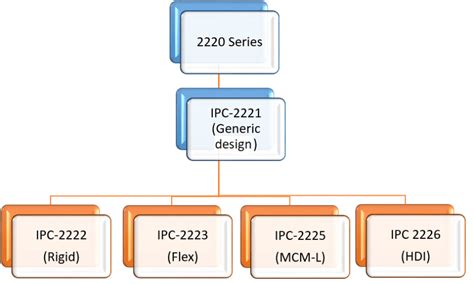
Steps to IPC-Certified PCB Assembly
Achieving IPC compliance in PCB assembly requires a structured approach that aligns with industry benchmarks. First, manufacturers must thoroughly review applicable IPC standards, such as IPC-A-610 (Acceptability of Electronic Assemblies) and IPC-J-STD-001 (Requirements for Soldered Electrical Connections), to define quality criteria for PCBA processes. Next, design files and Bill of Materials (BOM) should be audited to ensure compatibility with these guidelines, including pad sizing, component spacing, and material specifications.
Following this, PCB assembly workflows must integrate IPC-compliant procedures, such as solder paste application, component placement accuracy, and reflow profiling. Automated optical inspection (AOI) and X-ray testing are critical for verifying adherence to IPC Class 2 or Class 3 requirements, depending on the product’s reliability needs. Training technicians to interpret IPC standards—particularly for solder joint integrity and cleanliness—is equally vital to minimize defects.
Finally, documentation and traceability systems must be implemented to validate compliance at every stage. Regular audits, coupled with corrective action plans, ensure sustained alignment with evolving IPC guidelines. By embedding these steps into PCBA production, manufacturers not only meet regulatory demands but also elevate product performance and customer trust.
IPC Benefits in Electronics Production
Adherence to IPC standards in PCB assembly delivers measurable advantages across electronics manufacturing workflows. By establishing uniform criteria for material selection, component placement, and soldering techniques, these guidelines ensure PCBA processes achieve repeatable quality while minimizing production variances. Manufacturers leveraging IPC frameworks report 15-30% reductions in rework rates, directly translating to lower material waste and improved throughput.
The standards’ emphasis on traceability protocols strengthens supply chain accountability, enabling precise defect tracking from raw materials to finished boards. This alignment with global regulatory expectations simplifies certifications for aerospace, automotive, and medical applications—sectors where IPC-compliant PCB assembly is non-negotiable. Furthermore, consistent application of IPC-A-610 acceptance criteria enhances cross-functional collaboration, as engineers and inspectors share a unified reference for evaluating PCBA integrity.
Beyond operational efficiencies, IPC adherence fosters long-term reliability in end products. Stress-testing methodologies defined in standards like IPC-9701 validate solder joint durability under thermal cycling, reducing field failure risks by up to 40% in harsh environments. As miniaturization and high-density interconnects redefine PCB assembly complexity, these protocols provide a scalable foundation for balancing innovation with manufacturability.
Conclusion
Adherence to IPC standards in PCB assembly ensures that quality and reliability remain central to electronics manufacturing. By integrating these guidelines into PCBA processes, manufacturers can systematically address common challenges such as solder joint integrity, component placement accuracy, and material compatibility. This alignment not only minimizes defects but also streamlines production workflows, reducing costly rework and delays.
The strategic application of IPC compliance fosters consistency across batches, which is critical for meeting rigorous industry benchmarks and customer expectations. Furthermore, it positions manufacturers to adapt seamlessly to evolving technological demands, ensuring long-term competitiveness in sectors like aerospace, medical devices, and consumer electronics.
Ultimately, prioritizing IPC standards in PCB assembly is not merely about regulatory fulfillment—it’s a commitment to operational excellence and sustainable innovation. Organizations that embed these protocols into their core practices will not only mitigate risks but also enhance trust with stakeholders, solidifying their reputation as leaders in precision-driven electronics production.
FAQs
What are the most critical IPC standards for PCB assembly?
Key standards include IPC-A-610 (acceptability of electronic assemblies) and IPC-J-STD-001 (soldering requirements). These define criteria for PCB assembly processes, ensuring consistency in component placement, solder joint quality, and material selection.
How does IPC compliance improve reliability in PCBA?
Adherence to IPC standards minimizes risks like cold solder joints or component misalignment. By following IPC-6012 for fabrication and IPC-7351 for land patterns, manufacturers reduce defects, enhancing the long-term performance of PCBA products.
What steps ensure IPC-certified PCB assembly?
First, validate design files against IPC-2221 guidelines. Next, implement rigorous inspection protocols (e.g., IPC-A-600 for bare boards) and use certified materials. Finally, train staff to meet workmanship standards outlined in IPC-A-610.
Can IPC standards reduce manufacturing costs?
Yes. By preventing rework through defect prevention and streamlining processes, IPC compliance lowers waste. For example, IPC-2581 optimizes design-to-production workflows, reducing errors in PCB assembly phases.
How do IPC standards align with industry regulations?
IPC benchmarks integrate with global requirements like RoHS and REACH. Compliance ensures PCBA products meet both technical and environmental standards, simplifying market access.
Ready to Optimize Your PCB Assembly Process?
For expert guidance on implementing IPC standards in your PCB assembly workflow, please click here to explore tailored solutions.

